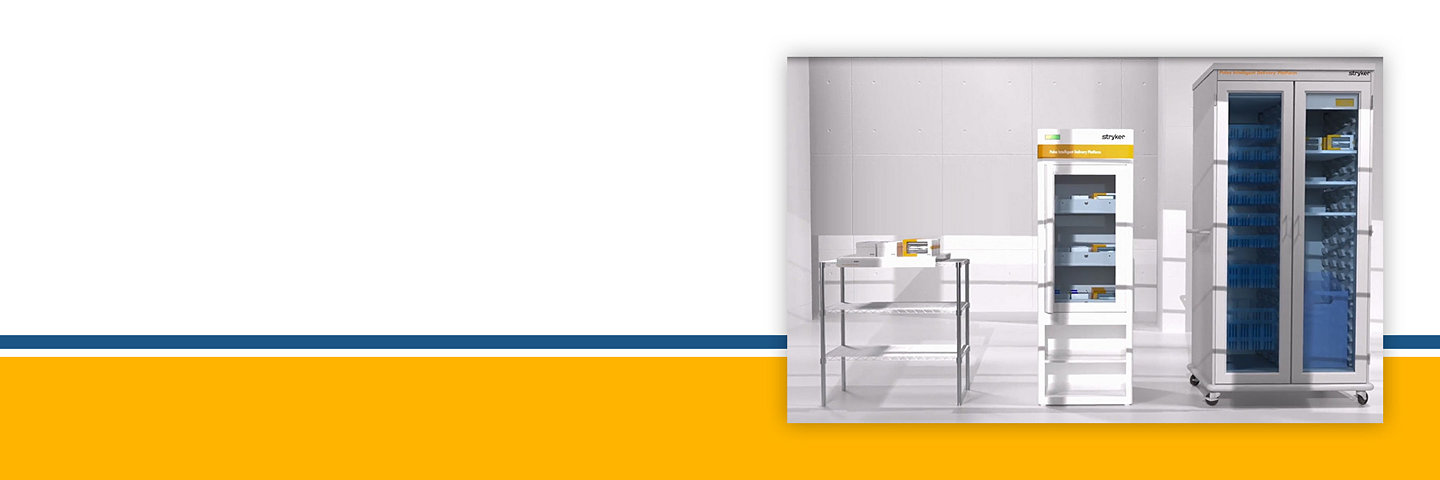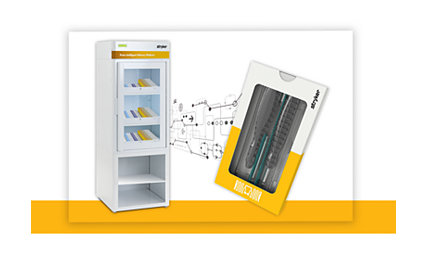09-Oct-2023
Over the past several years, many elective and diagnostic procedures have been migrating from hospitals to ambulatory surgery centers (ASCs), accelerated even further by the pandemic. Patients, physicians and insurers continue to drive the trend given the benefits: ASCs are more efficient, help increase patient satisfaction and reduce costs.1
According to the Ambulatory Surgery Center Association, the increase in demand has been made possible by technology.1 It’s an area that Stryker specializes in, offering nearly 14,000 products across more than 22 procedural categories. Patrick Fisher, Vice President and General Manager of Stryker’s Foot & Ankle business, has seen this hospital-to-ASC shift and related technology trends firsthand throughout his two decades working in extremities and biologics. Patrick shares how implant and fulfillment systems are the next wave of innovation positively impacting ASCs and his team’s vision for the future of this technology.

What does Stryker’s Foot & Ankle team focus on?
“There are 26 bones in the foot, and there are many things that can happen to a patient that will impact their quality of life. Let’s say somebody breaks their ankle in a car crash when they're young or gets into a bike accident. Over time, their ankle may enter degenerative joint disease – they essentially get post-traumatic arthritis and end up needing an ankle replacement or fusion.
Another condition is Charcot neuroarthropathy, also known as Charcot foot– one of the hardest for our customers to treat due to numerous vascular implications. And then there are bunions, which are typically genetic and hereditary. Three million Americans over the age of 18 suffer from them.2
The beauty of foot and ankle is that there are so many different procedures available to improve outcomes for patients, and our team is passionate about developing solutions for these conditions.”
How would you describe the hospital-to-ASC shift?
“Shifting from hospitals to ASCs can provide numerous benefits for our customers and their patients. Patients prefer a streamlined and user-friendly experience. They appreciate the atmosphere and fewer individuals dealing with severe illnesses. Many of our customers also prefer to operate within the ASC. Due to the nature of an ASC, where elective surgeries are the primary objective, our customers often experience time-saving efficiencies in scheduling surgeries and within the operating room workflow.
To support this shift, we are focusing on innovations that provide additional efficiencies, such as packaging solutions, improvements in instrumentation, and bundling products for smoother transactions.”
What is the Pulse Intelligent Delivery Platform?
“Stryker’s Pulse Intelligent Delivery Platform is a product and fulfillment offering designed to be a reliable program for foot and ankle surgery within the ASC setting of care through smarter product configurations, personalized inventory allocations, and automated services. Pulse offers a full suite of surgery-ready forefoot products, and is designed to help reduce clutter in the OR, provide ease of use for healthcare professionals, reduce sterilization processing costs and support global sustainability goals. It’s an innovation that our teams were very excited to bring to the ASC space since more and more elective procedures are being moved there.
The Pulse platform also addresses patient safety by providing traceable, sterile and meticulously packaged supplies that are ready for immediate use. This approach eliminates the risk of reused instruments and supports patient safety by bypassing the traditional central sterile area, where contamination risks exist.”
How did you work with your customers to develop the Pulse platform?
“Data-driven discoveries led the team to dive deep, conducting voice-of-customer research and collaborating closely with surgeons, nurses, and administrative staff. The team focused on uncovering our customers’ needs in ASCs, which led us to create something unique for storage.
Our team delved into two main areas. First, they aimed to make packaging smarter and more innovative, making it user-friendly and organized. Second, they partnered with nurses to collect valuable feedback, ensuring the platform would make things easier and help them avoid mistakes.”
How is the R&D team innovating?
“We are working to find ways to make surgeries for our customers more efficient outside of our implants and traditional instruments. For example, we’re currently exploring new advancements, with a particular focus on iterative improvements to Pulse as well as incorporating the latest enabling technologies like AI. One of the reasons many surgeons prefer the ASC setting is the potential to conduct elective orthopaedic procedures efficiently each day. Our goal is to align our foot and ankle products and services with this accelerated pace. The integration of enabling technologies will help us achieve this – that’s really our next frontier.”
What makes you most excited about the future?
“The most exciting thing is that we’re not selling a widget; we are providing an ideology around implant delivery and how we will interact with our customers. From a broader perspective, digital and enabling technology will likely be the biggest game-changer. Shouldn't ordering inventory from Stryker be as easy as ordering a new pair of shoes from Amazon? The whole idea is to have much deeper discussions about our customers’ ASC needs and deliver solutions that help them provide exceptional care for their patients.”
References
- Ambulatory Surgery Center Association. “ASCs: A Positive Trend in Health Care.” Accessed 7 August 2023 via https://www.ascassociation.org/advancingsurgicalcare/aboutascs/industryoverview/apositivetrendinhealthcare.
- https://intermountainhealthcare.org/blogs/do-high-heels-cause-bunions
COMM-GSNPS-SYK-830154




